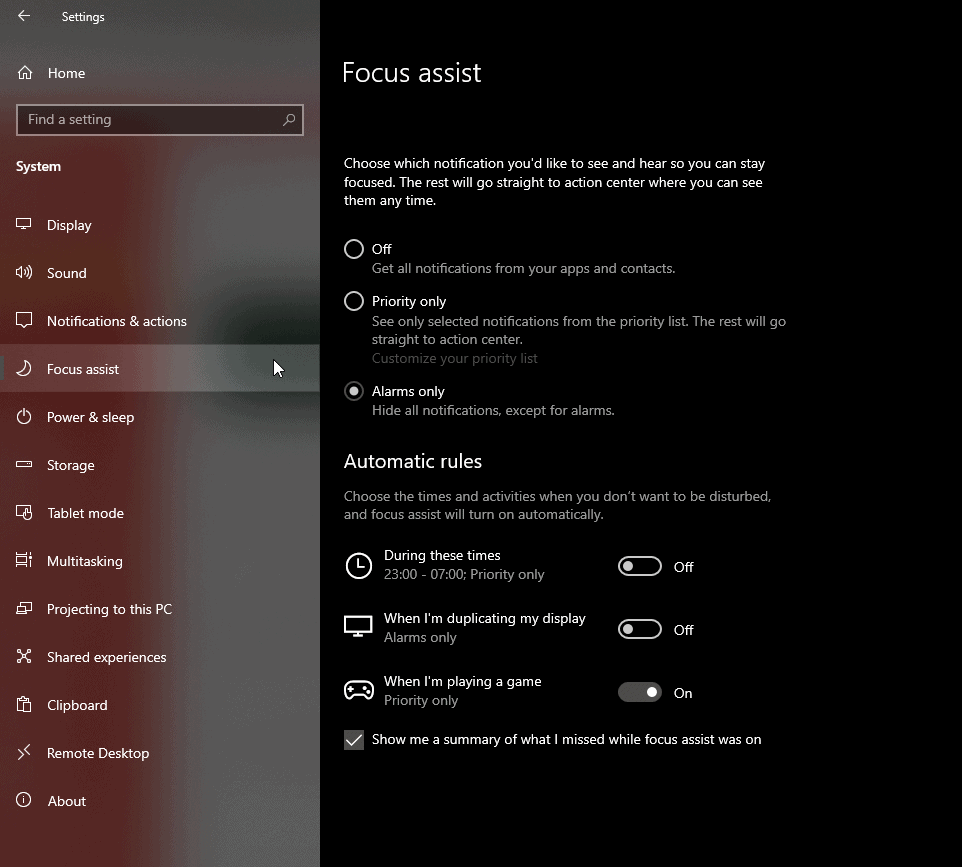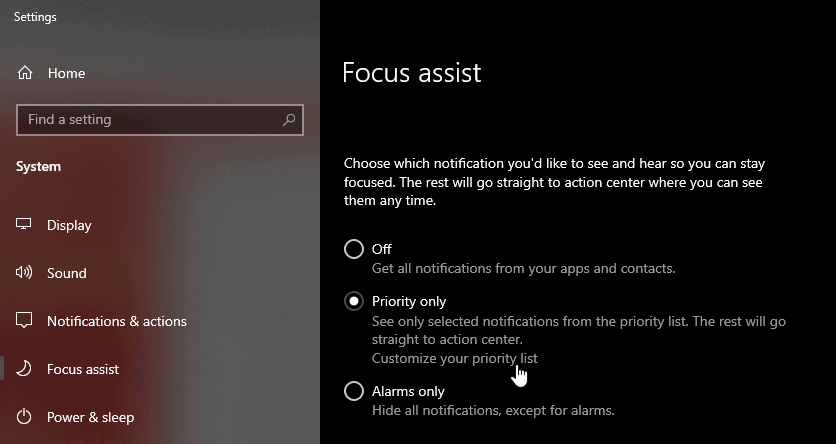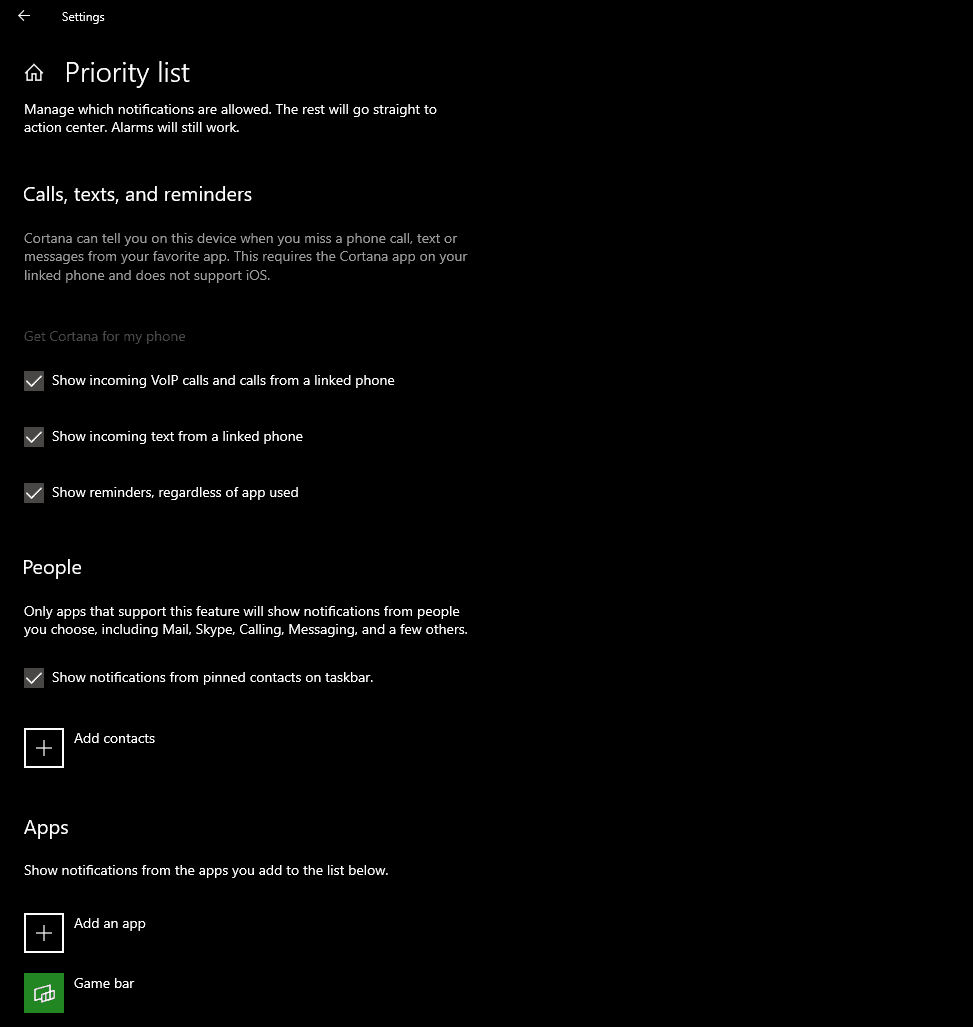Have you ever been unable to focus at work because your PC would constantly show notifications from apps and websites? Well, Windows 10 has a nifty feature called ‘Focus assist’ which lets you either completely switch off all notifications, pause notifications for a specific period of time, or allow only priority notifications to come through, thus allowing you to use your PC without getting disturbed, whether that be while making a presentation, watching a show, playing a game, or just to take a break from it all.
It is a rebranding of ‘Quiet Hours’ which was available in the older versions of Windows.
How to enable Focus assist
The simplest way to toggle Focus assist On and Off is from the Action Center. You can find it by clicking on the rectangular button at the bottom right corner of the screen. If you have a touchscreen device, you can also swipe left from the right edge of the screen.
Inside the Action Center, you should see a button which says, ‘Focus assist’. If you don’t see it, you might need to expand the list. Click on ‘Focus assist’ button to enable the feature and switch between ‘Priority Only’ and ‘Alarms Only’ modes.
The ‘Priority only’ mode allows notifications only from the people and apps that you put on the priority list, while ‘Alarms only’ mode hides all notifications except alarms and reminders you set on your PC.
To customize the Priority list and use advanced options of Focus Assist, you can go to Windows 10 Settings » System » Focus assist OR right-click on ‘Focus assist’ button in the Action Center and select ‘Go to settings’.
How to set up Focus assist
Microsoft has added some advanced features to Focus assist settings such as Automatic rules to activate focus assist automatically on a scheduled time, or while you’re gaming or duplicating your PC’s display.
Focus assist Automatic rules
- During these times: This lets you set a timer for when focus assist should be enabled. You get to pick a start time and end time and set how often you want it to repeat – daily, on weekdays, or weekends.
- When I’m duplicating my display: If this is set to ‘On’, Focus assist gets enabled automatically if your screen is being mirrored or shared, wirelessly or using a cable. For example, while you are making a presentation at work.
- When I’m playing a game: You can set your Windows device to automatically enable Focus assist if you are playing a DirectX game on full screen.
- When I’m at home: If you have given Cortana permission to use your location and you have saved your home address, turning this feature on will automatically enable Focus assist when you reach home to avoid carrying the stress of your work into your home.
- When I’m using an app in full screen mode: When you’re using a program in full screen, you’re likely doing some critical work or watching a movie or playing a game, and it can be annoying to see a notification banner pop-in. Thankfully, with this automatic rule, Windows will enable ‘Focus assist’ automatically when an app is running in the full-screen mode.
Customize your priority list
When you enable the ‘Priority only’ mode, you get notifications only from people and apps on your priority list. What goes on the list is completely decided by you. Click the Customize your priority list link below the ‘Priority only’ option in the Focus assist settings.
The Priority list can be configured based on the type of notifications and where they come from. Here’s detailed info on all available options:
- Calls, texts, and reminders: In ‘Priority only’ mode, you get to decide if you want to receive notifications of calls and texts from a linked phone via Cortana. Also, you can enable/disable notifications for reminders.
- People: Apps which support and use data from the People app on Windows 10 such as Mail, Skype, Messaging, and a few others can be tuned to show notifications only from the contacts you select from the People app. There’s also an option to allow notifications for pinned contacts whether or not they are added to the Priority list.
- Apps: If you want to receive notifications from selected apps while in ‘Priority only’ mode, you can add them here. For example, if you want to be notified of any incoming mail while you are using Focus assist, you would add the Mail app to your priority list.
That’s all about Focus Assist in Windows 10. We hope you find this article helpful.













Member discussion